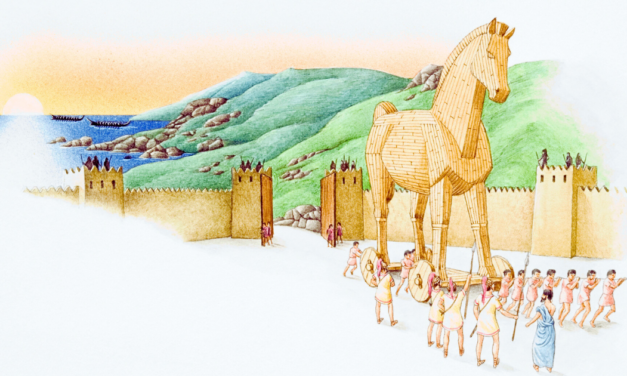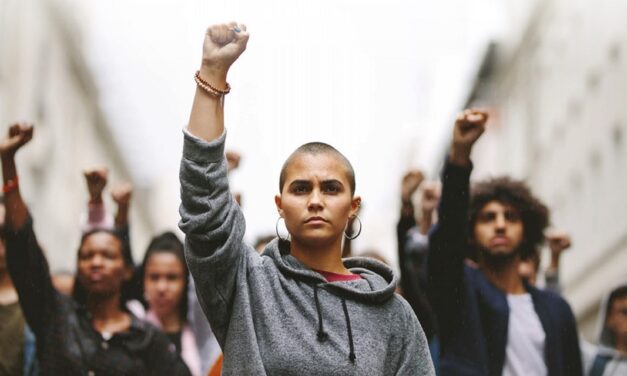This article first appeared in the Christian Research Journal, volume 25, number 4 (2003) as a companion to the feature article “Shamanism: Eden or Evil?” by Mark Andrew Ritchie. For more information about the Christian Research Journal, click here.
A few decades ago, “shamanism” was a word known mainly by anthropologists. As the New Age movement grew in the West, however, many others were introduced to and embraced spiritual practices drawn from several primitive cultures such as Native American, various Latin American, Hawaiian, Eskimo, and other indigenous groups. These practices, which emphasized trance and ecstatic states, spirit contact, animal spirits, out-of-body experiences, and nontraditional healing1 were harmonious with the budding New Age beliefs that emphasized the earth, transcendence through drugs, and multileveled realities. Neoshamanism thus was born.
Two of the most influential people in the rise of neoshamanism were Carlos Castaneda and Lynn Andrews, who claimed to have been initiated into shamanism by native teachers. Castaneda claimed to have been a student of Yaqui Indian Don Juan Matus, while Lynn Andrews claimed to have studied under women teachers such as Agnes Whistling Elk and Ruby Plenty Chiefs. Castaneda’s many books on shamanism, including his influential and controversial The Teachings of Don Juan published in 1968, as well as Andrews’s many books since 1981, have sold quite well.
Castaneda, an anthropology student in 1960 who set out to research the medicinal properties of plants, enlisted the help of shaman-sorcerer Don Juan.2 Thus began Castaneda’s journey into the world of sorcery, where dreams and visions became the prime reality — a spiritual trip that included hallucinogens, which was one of the touchstones of “spiritual awakening” in the 1960s and 1970s. Castaneda’s views resonated well with New Age seekers. He said, for example, that sorcerers “navigate” and “perceive energy directly” because they see the universe as a flow of energy3 — the New Age asserts that all is energy. Castaneda wrote about sorcery and Don Juan as a sorcerer, but in many respects he was referring to shamanism by another name. His books about his spiritual journey and Don Juan ignited interest in shamanism and became a seminal influence in the rise of neoshamanism.
The 1990 publication of Serge King’s Urban Shaman and Michael J. Harner’s The Way of the Shaman, as well as magazines such as Shaman’s Drum (started in 1985) and Sacred Hoop, featured stories and teachings of self-proclaimed shamans and helped bring shamanism to the suburbs.4 These works introduced practices such as the sweat lodge, a spiritual purification ceremony taken from Native American traditions. Wet heat from hot stones splashed with water creates a near suffocating heat inside a temporary hut for participants who typically chant, meditate, and receive intuitive visions. Another common practice was the vision quest,5 a journey made after fasting and meditating to find one’s totem (an animal spirit that serves as one’s guide and protector). The use of drums in shamanic ritual was also adopted to induce a trance state “necessary to the shaman’s ‘magical flight.’”6
One anthropology professor said people were drawn to shamanism “because they have a biological need for the ecstasy induced by mystic experiences.”7 The quest for physical and emotional healing outside traditional medicine was another strong draw.8
The New Age emphasizes Eastern meditation, energy, earth consciousness, the Higher Self, intuition, natural healing, and transcendent states, sometimes with the aid of hallucinogens. Such concepts and activities were a breeding ground for the new shamanism and its focus on ecstatic states, visions, and healing.
According to Andrews, for example, shamanism is “very much related to the harmonies of the earth…all things are alive; they all have energy and a purpose and a meaning…a shaman is someone who is related to those meanings.”9 Andrews asserts, “I have learned about how to heal the body with the power of thought, the power of spirit.”10 Andrews believes that conscious people are becoming more aware because “we are moving at a much higher frequency.…Because the Christed consciousness is right above us.…we are tuning into this Christed consciousness.”11 The concept of Christ consciousness, however, comes from the New Age, not from shamanism; but the source of a concept makes no difference to Andrews, as long as “you are aligned with the goddess, with Jesus or with Buddha or with Native American teachings, whatever shamanic work, it doesn’t really matter.”12
CRITICS OF NEOSHAMANISM
The new shamanism was not without its detractors. Many Native Americans resented the use of their traditions and teachings outside the context of their culture. They considered the new shamans to be New Age charlatans.13 A southern Cheyenne Indian said, “Somehow, I think (shaman rituals) belong only to the Indians,” accusing non-Natives of first taking their land, then their spirituality.14 Other Native Americans said people should not be charging money to teach spiritual traditions.
In 1988, Andrews was sued by a former live-in companion, David Carson, who claimed that her books were based in part on stories he had written.15 Others, meanwhile, contended that some of Andrews’s geographical and cultural terms were in error, such as her Cree Indian guide having used Lakota and Hopi terms.16 A Native American professor who frequently worked among the Cree of Manitoba, moreover, noted that no one there had ever heard of Andrews.17
Castaneda, whose tales of the sorcerer Don Juan were never verified, was accused of making fraudulent claims in his story that do not fit the geography or the Yaqui Indian culture and of presenting teachings that resembled Hinduism or Buddhism rather than Yaqui beliefs.18 One critic stated that Castaneda “claimed to climb trees that can’t be climbed and to stalk animals that can’t be stalked.…He could provide no samples of the hallucinogenic mushrooms that he supposedly used, and indeed there are none in that region. Worst of all, he obviously knew nothing about Yaqui Indian beliefs and culture.”19
Despite these criticisms, followers of neoshamanism have defended Castaneda. Whether Castaneda’s claims are true or false, or whether Don Juan is real or imaginary, is irrelevant, according to one follower. What matters is the teaching of Don Juan — “Does it ‘work’ or not?”20 Another supporter stated that Don Juan’s words lead us to a place “beyond the need for validity and scientific authenticity.”21
THE TREND CONTINUES
Although interest in shamanism seems to have peaked, a variety of materials are still readily available. Lynn Andrews’s first book, Medicine Woman, is in its 39th printing. Her Web site offers online courses in balancing one’s “Spirit wind,” communing with one’s sacred animal of power, and creating a “Spirit Friend…who will assist with spirit retrieval journeys into the dreamtime.”22 There are many other Web sites presenting shamanic spirituality, including one run by Michael Harner.23 Shaman’s Drum and Sacred Hoop24 are still in circulation.
More recent shamanistic books include The Four Agreements (1997) by Don Miguel Ruiz and Breaking Open the Head: A Psychedelic Journey into the Heart of Contemporary Shamanism (2002) by Daniel Pinchbeck. Ruiz’s book allegedly conveys teachings from the Toltec tradition and has spawned a number of Web sites and classes. Pinchbeck’s book details a spiritual journey that includes psychedelic drugs, which he calls “visiting the ‘spirit world.’”25
Considering the adaptability of New Age ideas and the rise of earth-based Neo-Pagan religions, neoshamanic quests and visions will undoubtedly be spirited into the twenty-first century.
— Marcia Montenegro
NOTES
- William S. Lyon, “Working with Sacred Power,” Shaman’s Drum 16, 39 (Mid-Spring 1989).
- Bruce Wagner, “You Only Live Twice,” Details, March 1994, 168.
- Ibid.
- Charles Lyles, “Shake, Rattle and Roll,” The Virginia Pilot, 27 July 1993, sec. B-1.
- Stacy Trevenon, “Shaman Draws on Old Tradition,” Half Moon Bay Review, 1 August 1990, sec. 4B; Debra Warner, “Shamanism’s Seekers,” The Orange County Register, 12 February 1991, sec. E.
- Lyon.
- Warner.
- Trevenon.
- http://www.lynnandrews.com/Pages/frameteach.html
- Lynn Andrews, “An Interview with Lynn Andrews,” interview by Dennis Hughes, http://www.shareguide.com/Andrews.html.
- Lynn Andrews, “phenomeNEWS Exclusive Interview with: Lynn Andrews,” interview with phenomeNEWS, http://www.phenomenews.com/archives/june01/andrew.html.
- Ibid.
- Lyles.
- Warner.
- Jon Magnuson, “Selling Native American Soul,” http://www.religion-online.org/cgi-bin/relsearchd.dll/showarticle?item_id=905. Originally appeared in the Christian Century, 22 November 1989, 1084.
- Ibid.
- Ibid. See Magnuson’s article for further criticism of Andrews.
- Ross Paviac, review of The Don Juan Papers by Richard de Mille, Cornerstone Magazine 13, 70.
- Kathryn Lindskoog, “In the Footsteps of Carlos Castaneda,” http://www. discovery.org/lewis/carlos.html.
- http://www.geocities.com/Athens/Rhodes/5418/continue.html.
- “Carlos Castaneda and the Don Juan Controversy: Are You the Hunter or the Prey?” http://users.rcn.com/sfbardo/castaneda.htm.
- http://www.lynnandrews.com/Pages/frameteach.html
- The Foundation for Shamanic Studies, www.shamanism.org.
- Published in Wales as the “Leading magazine for Shamanism, Animism, and Earth Wisdom” (www.sacredhoop.org).
- Publisher’s Weekly, review of Breaking Open the Head by Don Miguel Ruiz, http://www.amazon.com/exec/obidos/tg/stores/detail/-/books/0767907426/ reviews/.








